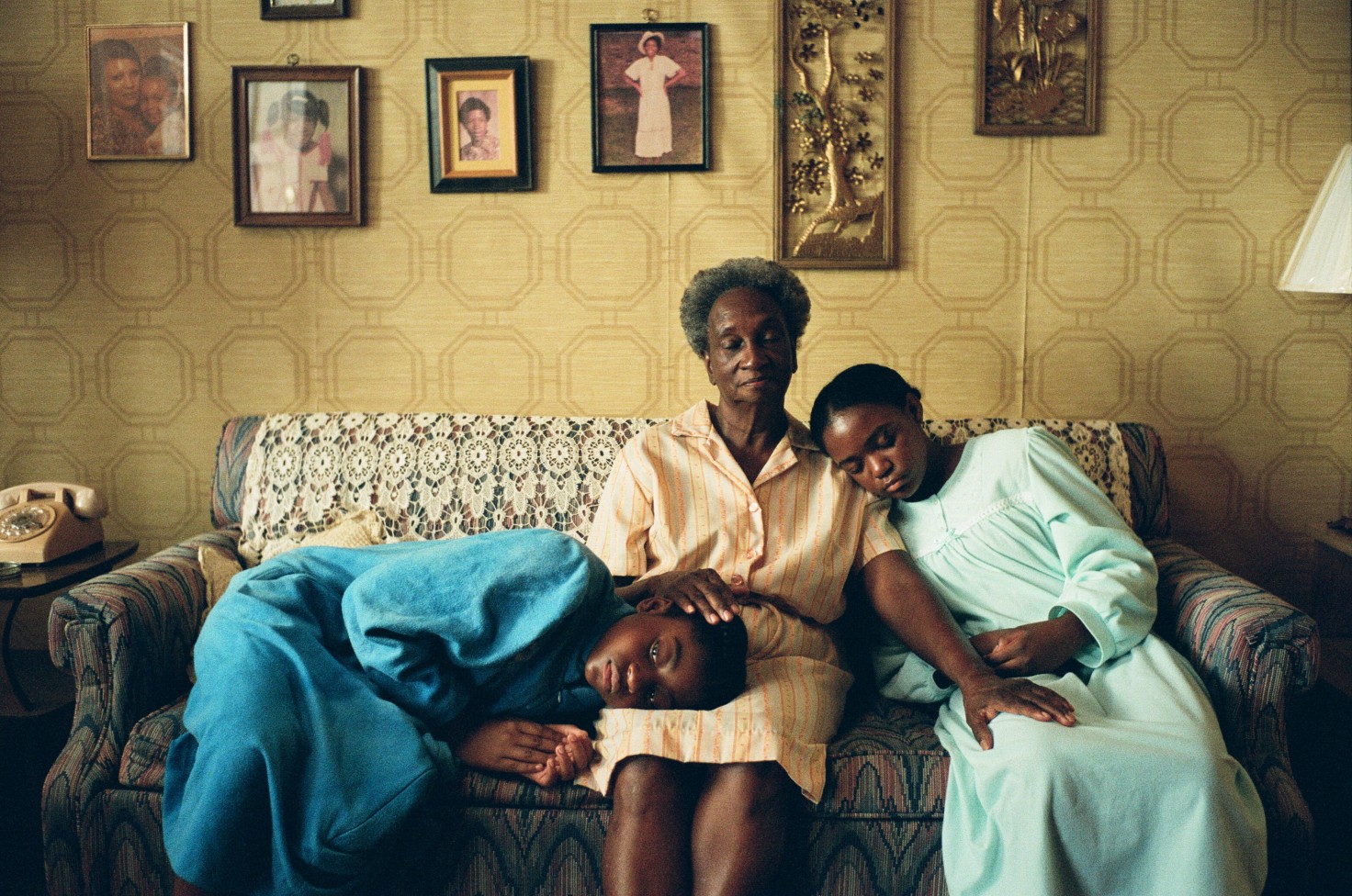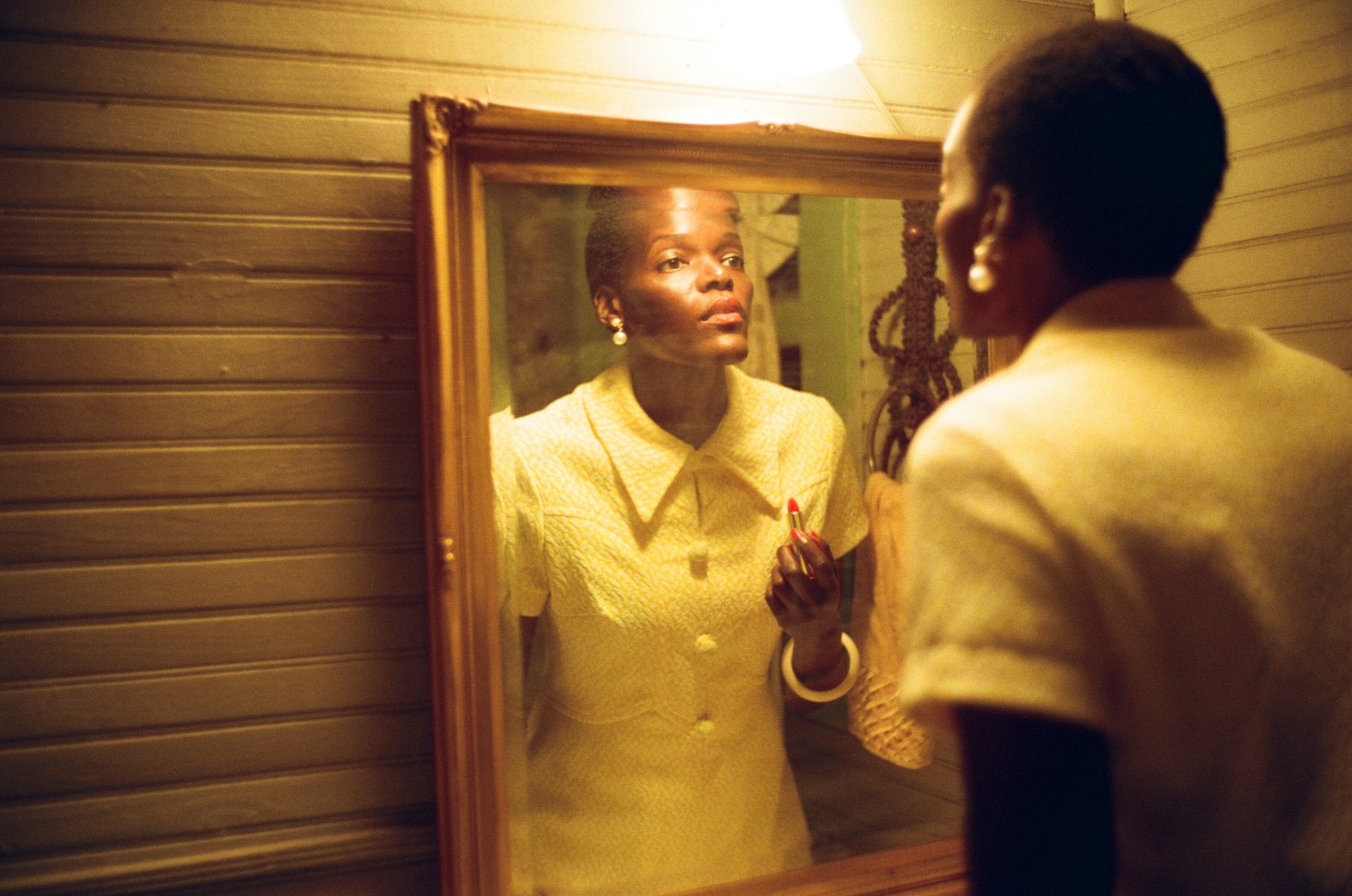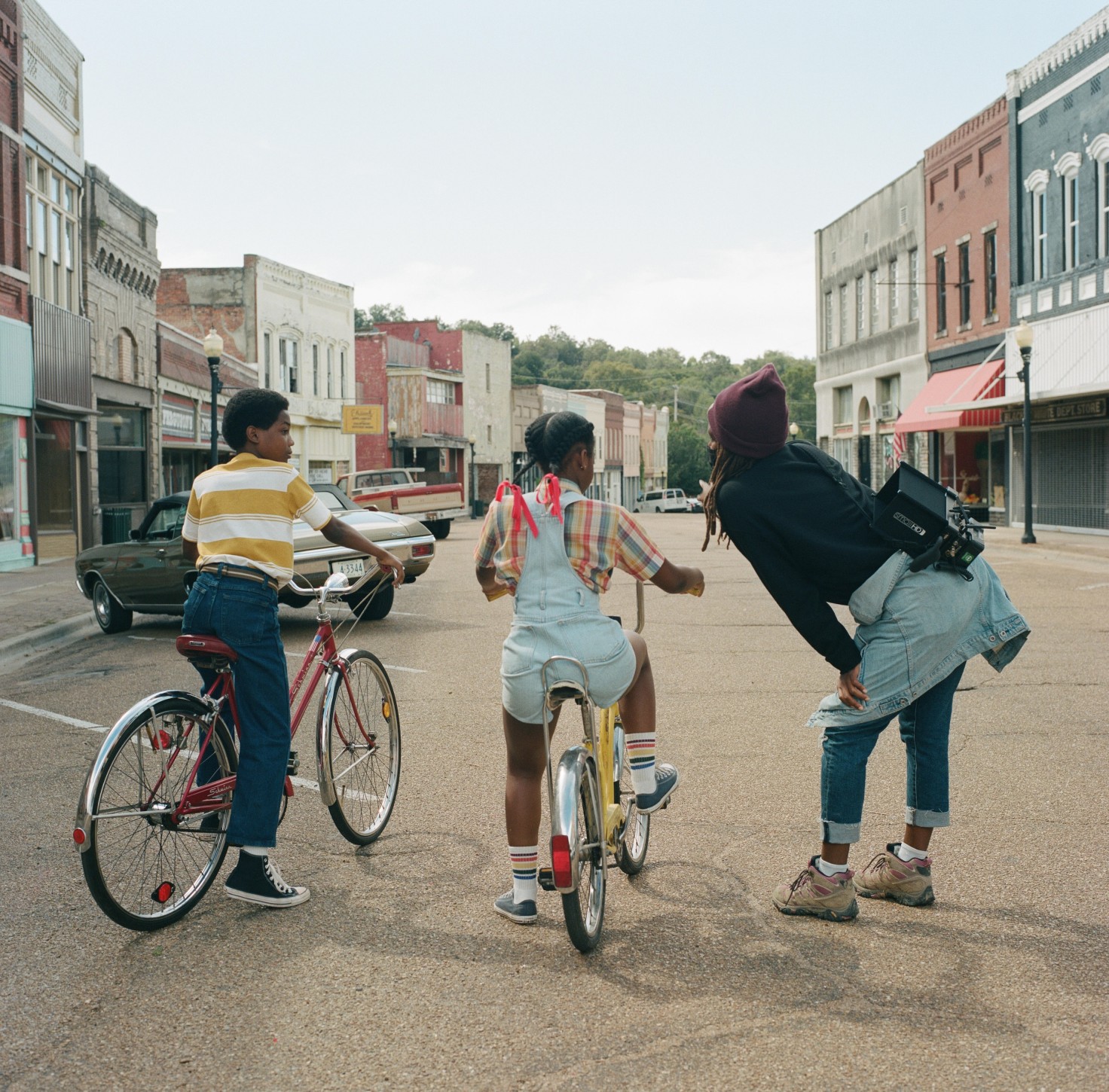Like flipping through a family photo album, the film transports viewers back and forth through intimate and emotional fragments, culled from the memories of Mack (played by Charleen McClure), a Black woman living in rural Mississippi. Images that blur the distinctions between still and moving are dense with heavy raindrops, trees swaying from violent winds, and cicadas scuuurr-ing as myriad sounds and prolonged silences animate tactile and ambiguous memories.
Directed by poet and filmmaker Raven Jackson, All Dirt Roads crafts a series of visual portraits of Mack’s everyday life, each shot in 35mm. Together with cinematographer Jomo Fray and editor Lee Chatametikoo, Jackson interweaves what she calls Mack’s “life portraits” with the rural landscapes that sustain her social world, in which the character experiences mesmerizing depictions of intimacy, kinship, care, and love. We witness Mack and her sister, Josie (Moses Ingram), eating dirt together and observe their parents, Evelyn and Isaiah (Sheila Atim and Chris Chalk) as they dance the night away, and gaze at an entire community as it mourns the tragic death of a loved one. In the end, a decade-spanning story remains untrapped by linearity or time but anchored in the lore of Black diasporic and ancestral connections to the land.
For Jackson, the film was an exploration of Black placemaking. “Before I wrote a word of the script,” she explains, “I had to smell the air of the film. I took a lot of photographs of the south, the family members, of landscapes.” The rite of earth-eating reverberates throughout the film. The ancient and global practice has sustained and healed Black people through various eras and circumstances. (Despite being pathologized in Western science as a form of pica, the practice has ancestral roots in West Africa and was used by enslaved peoples for medicinal, survival, and healing purposes.) In All Dirt Roads, Mack’s grandmother orates the tradition to a young Mack and Josie in their family home, continuing a multigenerational relationship with the lands that nourish them.
Mundane yet profound, Mack’s life portraits communicate the gravity of family secrets, heartbreak, grief, longing, love, and Black interiority often without the use of dialogue, prompting the audience to listen to the film’s tender and meditative moving images. As visual theorist Tina Campt posits, “listening to images” allows viewers to open themselves up to the other ways images touch and resonate with us. In this vein, Jackson continues the work of her short films, Nettles (2018) and A Guide to Breathing Underwater (2018), each of which share an experimental, movement-focused approach that prioritizes other modes of experiencing and knowing. Following the film’s New York Film Festival premiere, Jackson and I discussed the film’s prevailing themes over Zoom, from its use of water cycles, to the tradition of earth eating and the bonds of kinship it produces, as well as how her background in poetry helped structure the film.
This interview has been edited and condensed.




